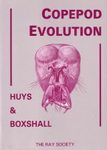Handbook / Manual
By: Jean Carlos Santos(Editor), Geraldo Wilson Fernandes(Editor)
600 pages, 155 colour photos and illustrations, 17 b/w illustrations, tables
![Measuring Arthropod Biodiversity Measuring Arthropod Biodiversity]()
Click to have a closer look
About this book
Contents
Customer reviews
Biography
Related titles
About this book
This book brings together a wide range of sampling methods for investigating different arthropod groups. Each chapter is organised to describe and evaluate the main sampling methods (field methods, materials and supplies, sampling protocols, effort needed, and limitations); in addition, some chapters describe specimen preparation and conservation, species identification, data collection and management (treatment, statistical analysis, interpretation), and ecological/conservation implications of arthropod communities. Measuring Arthropod Biodiversity aims to be a reference for zoologists, entomologists, arachnologists, ecologists, students, researchers, and for those interested in arthropod science and biodiversity. It is hoped the book will contribute to advance knowledge on field assessments and conservation strategies. Arthropods represent the most speciose group of organisms on Earth, with a remarkable number of species and interactions still to be described. These invertebrates are recognized for playing key ecological roles in terrestrial, freshwater and marine ecosystems. Because of the increasing and relentless threats arthropods are facing lately due to a multitude of human-induced drivers, this book represents an important contribution to assess their biodiversity and role in ecosystem functioning and generation of ecosystem services worldwide.
Contents
1. Arthropods: Why it is so Crucial to Know Their Biodiversity?
2. Sampling and Analysis Methods for Ant Diversity Assessment
3. Bees - How and Why to Sample Them
4. Social Wasp Sampling Methods
5. Sampling Methods for Butterflies (Lepidoptera)
6. Sampling Methods for Beetles (Coleoptera)
7. Sampling Methods for Adult Flies (Diptera)
8. Sampling Methods of True Fruit Flies (Tephritidae)
9. Sampling Methods for Dragonflies and Damselflies (Odonata)
10. Sampling Methods for Termites (Insecta: Blattaria: Isoptera)
11. Measuring Orthoptera Diversity
12. Hemiptera Sampling Methods
13. Collecting and Sampling Methods for Thrips
14. Techniques for Collection and Sampling of Pseudoscorpions (Arthropoda, Arachnida)
15. Standardized Sampling Methods and Protocols for Harvestman and Spider Assemblages
16. Sampling Galls and Galling Arthropods
17. Collecting, Rearing and Preserving Leaf-Mining Insects
18. Canopy Insect Sampling
19. Sampling Methods for Soil and Litter Fauna
20. Sampling Methods for Aquatic Insects
21. Sampling Methods for Blood Feeding Insects Diversity
Index
Customer Reviews
Biography
Jean Carlos Santos has a bachelor in biological sciences (Universidade Federal de Uberlândia), a master of sciences in ecology (Universidade Federal de Uberlândia) and a doctorate in ecology (Universidade Federal de Minas Gerais). Santos is currently an associate professor in the Department of Ecology of Universidade Federal de Sergipe, and previously, worked in the Biology Institute of Universidade Federal de Uberlândia. He has experience in ecology and entomology, acting on insect-plant interactions, gall-inducing insect and odonate diversity, and general ecology. He has written more than 70 peer-reviewed articles on various subjects and one book published by Springer.
Geraldo Wilson Fernandes has a bachelor in biological sciences (Universidade Federal de Minas Gerais), a master of sciences and a PhD in ecology (Northern Arizona University, USA). He has experience in evolutionary ecology, insect-plant interactions, biomonitoring, restoration ecology, climate change and environmental assessment. He has written more than 500 peer-reviewed articles on various subjects and five books (two of them published by Springer). He is a Tinker visiting professor at Stanford University and visiting professor at the Universidad de Sevilla, and a full member of the Brazilian Academy of Sciences and Research Fellow (1A) of the Brazilian National Research Council – CNPq.
Handbook / Manual
By: Jean Carlos Santos(Editor), Geraldo Wilson Fernandes(Editor)
600 pages, 155 colour photos and illustrations, 17 b/w illustrations, tables



















![Lebensraum Federkleid: Federn und Federbewohner Heimischer Vögel [Plumage as Habitat: Feathers of Domestic Birds and their Parasitic Residents]](http://mediacdn.nhbs.com/jackets/jackets_resizer_medium/22/225536.jpg?height=150&width=103)




![De Nederlandse Watermijten (Acari: Hydrachnida) [The Dutch Water Mites]](http://mediacdn.nhbs.com/jackets/jackets_resizer_medium/24/246499.jpg?height=150&width=105)











